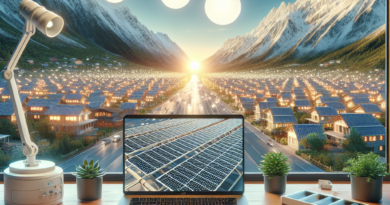Photovoltaic incentive for energy communities, how much is due and how it is calculated
A very important year begins for renewable energy and in particular photovoltaic systems.
The decree relating to the incentives for the new regime of renewable energy communities which will replace the fixed exchange one was published in recent days.
A gradual and historic transition starting from 1 January 2025 for medium and small-sized photovoltaic systems in Italy.
Let's see what the differences are and above all what the incentives will be for the new energy communities.
Renewable energy communities: what they are Until now, the regime for small and medium-sized photovoltaic systems such as those installed in private homes, condominiums or small businesses to store unconsumed energy was that of on-site exchange.
It made it possible to compensate the electricity produced and injected into the grid at a certain time with that withdrawn and consumed at a different time from the one in which production takes place.
From 1 January 2025 there will be a gradual conversion towards the renewable energy community regime.
The objective is to encourage the spread of renewable energy through forms of self-consumption and compensation of the renewable energy fed into the grid.
A renewable energy community is a group of citizens, small and medium-sized enterprises, territorial bodies and local authorities, including municipalities, cooperatives, research bodies, religious institutes and third sector institutions, located within the same geographical perimeter, which they share the energy produced by the renewable plants associated with the community.
To be part of a Cer, in addition to the requirement of belonging to the same transformation cabin, the power of the plant can be a maximum of 1 MW.
The government has decided on a series of incentives to promote the creation of these communities.
Energy communities: what incentives The new communities will receive incentives on self-consumed energy in two forms: an incentive tariff and a fee.
The incentive part is made up of a fixed and a variable part.
The fixed part varies depending on the power of the system, while the variable part changes based on the energy market price.
The maximum sum you will receive will be between 60 and 120 €/MWh.
In addition to the incentive tariff, we also have a fee defined as "exploitation fee for self-consumed energy".
This varies every year depending on the fees determined by ARERA.
For example, in 2023 it was €8.48/MWh but in the past it also reached €12/MWh.
There is then another increase based on the geographical location where the plant is located.
These increases take into account the lower producibility of the systems installed in the central-northern regions compared to those in Southern Italy.
We are around €4/MWh for the plants in Lazio, Marche, Tuscany, Umbria and Abruzzo; and 10 €/MWh for those in Emilia-Romagna, Friuli-Venezia Giulia, Liguria, Lombardy, Piedmont, Trentino-Alto Adige, Valle d'Aosta and Veneto.
The contributions will be paid for 20 years from the date of entry into operation of the plant.
To these contributions, for plants located in municipalities with less than 5 thousand inhabitants, a capital contribution is added, equal to a maximum of 40% of the cost of the investment, financed with Pnrr resources.
The contribution will be: €1,500/kW for systems up to 20 kW; €1,200/kW for systems with a power exceeding 20 kW and up to 200 kW; €1,100/kW for power exceeding 200 kW and up to 600 kW; €1,050/kW for systems with power exceeding 600 kW and up to 1,000 kW.
In the case of access to the capital contribution, always up to a maximum of 40%, a 50% reduction will be made in the incentive rate.
In case of a higher contribution, the rate will be lost entirely.
The eligible expenses of the contribution are: construction of renewable source systems (for example: components, inverters, assembly structures, electrical components, etc.) supply and installation of storage systems; purchase and installation of machinery, systems and hardware and software equipment, including expenses for their installation and commissioning; building works strictly necessary for the implementation of the intervention; connection to the national electricity grid; pre-feasibility studies and expenses necessary for preliminary activities, including expenses necessary to set up the configurations; planning, geological and geotechnical investigations, the burden of which is borne by the designer for the design definition of the work; works management, safety; technical and/or technical-administrative testing, consultancy and/or technical-administrative support essential to the implementation of the project.
read also Energy income 2024, here's who can have the photovoltaic system for free


